I was scheduled to visit my mum for her birthday and had everything crossed that the Myrtle Warbler which had taken residence in a garden in Garnock View, Kilwinning would remain until I arrived, some 22 days after it was first reported. This marks the first documented appearance on the UK mainland since 2014. There have been only approximately 30 sightings of this bird recorded in the UK, with nearly all in the Western and Northern Isles.
This sighting also marks the first record of an American warbler species in Ayrshire.
Once listed separately in bird guides, the Myrtle warbler and Audubon's warbler have long been reclassified as eastern and western variations of a single species: the yellow-rumped warbler. Familiarly dubbed "butterbutts" by American bird enthusiasts, these warblers make migrations across North America each spring and autumn. The migratory forms, known as Myrtle and Audubon’s, populate most of Canada and every U.S. state except Hawaii. During the breeding season, males sport a striking palette of grey and yellow, while females and non-breeding individuals exhibit a browner hue with subtler yellow accents and faint streaks. However, a 2016 study hinted at the existence of at least three distinct species. If this were confirmed, it would disrupt a long-standing position lasting five decades, perhaps in the future reinstating two beloved common names, cherished by many birders.
We left Banbury at 5.00am to allow an extra hour for the journey and stop-off in Kilwinning - hopefully that would be enough time to still get to to my mum's house before lunch. As it was, we arrived in Kilwinning around 11.15am, parked up and made for the communal back garden of 22/32 Garnock View. Behind the gardens is a slope running down to the River Garnock - hence the street name. The river flows through the Garnock Valley, originating from the hills near Lochwinnoch and running in a generally north-westerly direction before emptying into the Firth of Clyde near Irvine. The access to the back garden was through a service door between the properties, through a hall and out a back door into the garden. I sort of expected other birders to be present, but we were the lone visitors. One of the residents was standing at an open window on the ground floor and chatted for a while - very welcoming and amazingly tolerant of the continued arrival of birders outside their properties.
It was only a few minutes before the bird dropped into the trees behind, working through at speed then eventually onto the various foods on tables and feeders positioned along the fence line. No doubt the bountiful availability of food is a reason it has remained in the area for so long - as far as I am aware, the UK long-stay record for this bird species is 37 days. I took some photos for insurance but really wanted it on a fence post or tree, not on feeders.
I eventually got my chance to take a photo in a better environment and now was just waiting for a repeat opportunity. A local elderly lady birder turned up having been recommended to do so at a birding society meeting the night before - normally she watches birds on her walks and activities rather than actively birding but had been convinced this was worth a trip given she was local in Dundonald. What we could see was a slight change in appearance and it was possible to observe the bird was in the early stages on moult.
Yellow-browed warblers typically undergo a single complete moult each year, usually after the breeding season; the timing of the moult may vary slightly. The moult often occurs in their non-breeding range, which includes areas such as Southeast Asia and parts of South Asia. During the moult, yellow-browed warblers replace all of their feathers, including those on the body, wings, tail, and head. It is often the case that they may become more secretive and less active than usual as they focus their energy on feather replacement and avoid predators. No sign of that here.
It was soon time to pack up and join my mum for lunch - it was what we were actually here for!
I tend to use the time before breakfast for birding on these visits and so the following morning I woke and made my way onto the beach, specifically to see if I could connect with the dippers in the burn that runs alongside the Seamill Hydro; I usually manage a bit less than 2hrs including any travel.
It was raining gently so I put a rain cover over the camera and made my way along the sand to the bridge crossing the burn. Even before I reached the bridge, rounding the corner, I could see a dipper in the far distance at the corner where the burn turns up to and under the road. I reached the bridge and went to take a photograph, then noticing a kingfisher on the opposite side of the burn but in the same shot. The two birds just perched there on the rocks, neither making any move to feed or depart. A couple walking their dog crossed the bridge and by coincidence or as a result the two birds left, both away from where I stood. I waited for a while to see if either or both might return but it seemed futile.
I walked further along the beach towards Ardrossan but only came across rock pipit as a species of note. Returning across the bridge I waited again for the dipper but it failed to reappear and I soon walked back to the hotel, stopping to see some seals on the rocks.
The following morning the weather was drier and I decided to visit Saltcoats to see the purple sandpipers that had treated me to such great views back in January. I approached the spot, situated about 500m south of Saltcoats Harbour and in the tidal pools, finding no sandpipers present. In contrast to other waders, these birds display a remarkable level of trust, often permitting an approach within 3-4 meters before cautiously retreating and maintaining a respectful distance. They have a slightly larger and more robust build compared to a dunlin, but sporting an overall grey plumage complemented by yellowish legs and beak. At first glance, you might assume their grey appearance renders them dull and unremarkable, but the subtle contrast between their grey plumage and vibrant yellow-orange bill and legs presents a striking and handsome bird.
Out in front, a turnstone appeared on the wall, followed by another. Redshanks foraged nearby as mute swans gracefully departed the pools with a cacophony of sound. A flock of birds soon joined the turnstone, walking along the wall's edge - purple sandpipers! Within moments, they took flight and landed in the pools in front. Lost in the birds feeding close, I suddenly remembered my task: taking some photographs.
A rock pipit dropped in beside and worked through the seaweed.
As I'd come off the road into the car park, I had spotted a birder sitting against the wall of Oscar's cafe, scanning the sea with his scope. I circled back to chat with him and he mentioned having seen gannets, common scoter, kittiwake and red-throated divers that morning. None of these were presently in view. I mentioned that I might go and see black guillemots and he said it would be worth a look down in the harbour as they are often on view there, often showing well as they enter the breeding season. Despite the low tide there were four birds on the water, all looking rather splendid. The harbour provides an ideal habitat due the availability of suitable nesting sites.
I checked out the other side of the harbour wall, through a small, gated opening leading down a few steps but found only black-headed gulls - it is apparently not unusual to spot otters from here - a mental note to try again someday. My time was up, and I returned to the hotel for breakfast.
On the next morning it started cold, and I made my way to Stevenston Point, looking out over choppy water - it was dry and so would be enjoyable whatever showed. Red-breasted mergansers passed at great distance, along with the ever-present shags. Common scoters bobbed on the water at even greater distance. While scoping the water I hadn't seen anything unusual but when I lifted my head, I found a gannet coming off the water and realised I'd missed it diving just offshore - my first of the year.
I got caught up watching a red-throated diver quite far offshore, diving frequently and staying under for long periods, often coming up a long distance from where it went under. Photos were always going to be record shots. I scanned the structures nearby and found a pair of purple sandpipers feeding on the water's edge but showing at greater distance than I'd been afforded the day before.
I'd resisted dropping down onto the beach but could easily scope the birds along the sand to the north and south. There were substantial numbers of sanderlings, often being flushed by over-enthusiastic dogs being walked along the beach. On a couple of occasions the birds circled past the point and onto the other beach, returning five or so minutes later.
Despite searching I could only add some guillemots far out on the water, rock pipit and turnstones on the rocks and eider ducks diving. I ran out of time again, heading back with only just enough time to have a shower and shave before a 9.00am breakfast.
On the Sunday I played golf with my brother, the first time I have played for around 13 years. I started well but soon fell into a rather mediocre rhythm as I tired, and the rain set in. I didn't bird that morning as time was tight.
On the final morning I decided to make my way down to Troon South Beach where a couple of snow buntings have been reported of late, although the latest reports had them across on Ayr beach, not far across the water or along the coast. Access is relatively simple across the Royal Troon golf course and at this time of the morning there was no one on the course, at least not this far round. Crossing the course onto the beach I spotted skylarks and meadow pipits but on the beach was treated to a flock of 14 curlews, initially on the ground but in the air as I broke the horizon. Along the water's edge were assorted gulls and oystercatchers. A lovely turnstone foraged at close quarters.
I worked up and down the beach, halfway back to Troon Harbour and down to Pow Burn but really only had fly-by red-breasted mergansers to show for it - the sea was rough, and it was difficult to spot if anything was on it.
Looking out from the beach I could spot a lighthouse which looked lovely in the early sun. Lady Isle Lighthouse is located on the island of the same name, around two miles southwest of Troon in the Firth of Clyde. The island once housed a chapel dedicated to Saint Mary and is located on a low-lying island warning of the Half Tide and Scart Rocks, and aids navigation along the Firth and into Troon and Irvine harbours. Established in 1903 to the design of David Alan and Charles Stevenson, it is unusual in design with a cross-shaped tower and external buttresses. An external staircase runs up the side of the tower, not visible in the photo below.
Overhead a small plane passed and when they do, I now often take a photo to show to Dave South - this plane was less remarkable and wouldn't probably be worthy. However, this Piper PA-46R-350T is based at Enstone Airfield, Shenington Airfield and London Oxford Airport, and previously at Wellesbourne Mountford in Warwickshire for over fifteen years. The operators 'Take Flight Aviation flying club and flight school' offer flying lessons, flight training and light aircraft hire. I looked up the plane's flights and see it wtook off from Coventry Airport at 6.35am to Glasgow Prestwick, landing at 8.07am. Amazing to have a plane from almost where we live on the border between Oxfordshire/Warwickshire fly over my head on the beach in Ayrshire.
It was nice to get out in the mornings and particularly satisfying to have been able to connect with the Myrtle warbler.
Year list: 153.

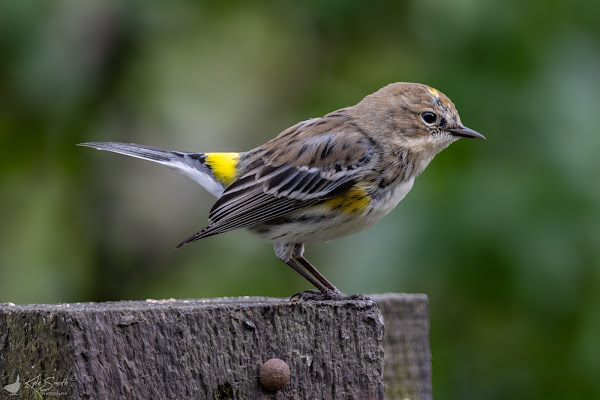
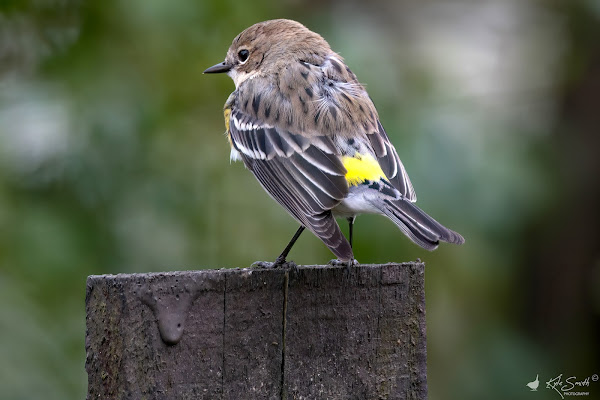

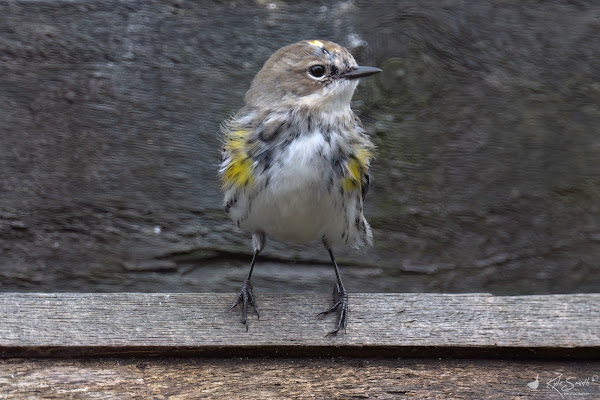

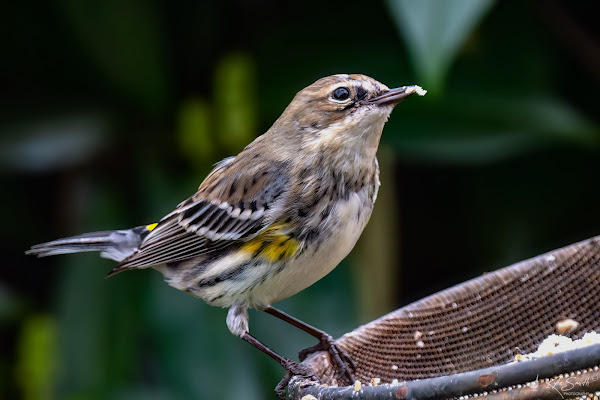








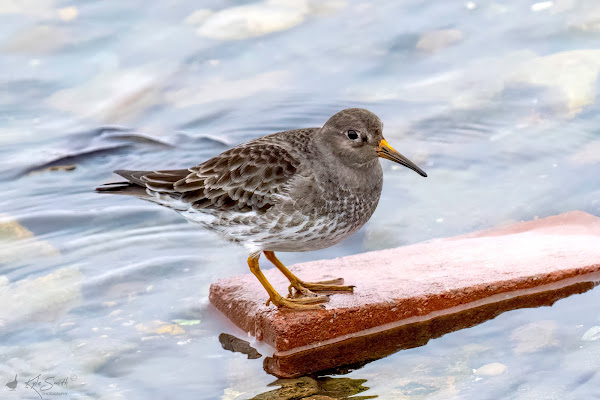






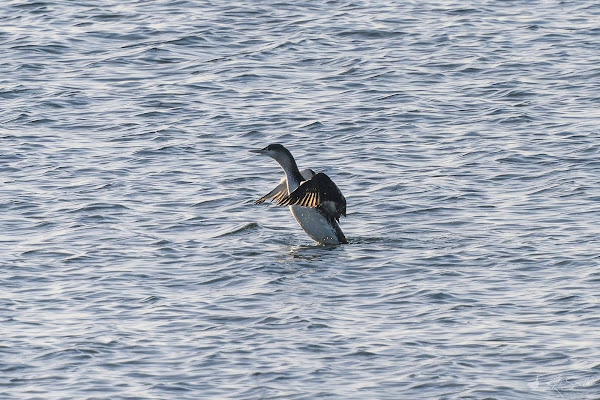




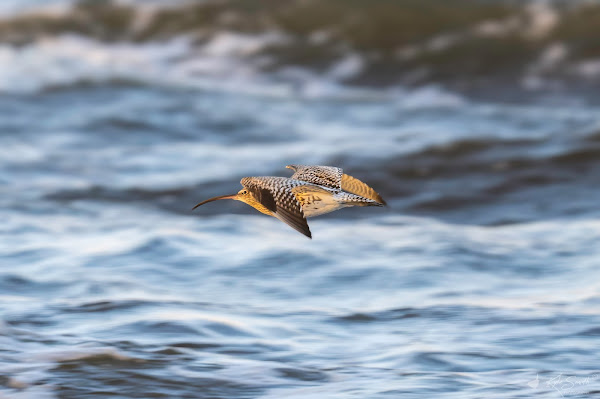






No comments:
Post a Comment